|
| |
Inventors
Back
to Indivisual Skills
| James
Watt |
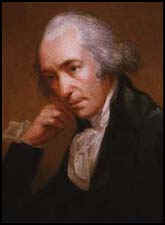 |
James
Watt, the son of a merchant, was born in Greenock, Scotland, in 1736. At
the age of nineteen Watt was sent to Glasgow to learn the trade of a
mathematical-instrument maker.
After spending a year in
London, Watt returned to Glasgow in 1757 where he established his own
instrument-making business. Watt soon developed a reputation as a high
quality engineer and was employed on the Forth & Clyde Canal and the
Caledonian Canal. He was also engaged in the improvement of harbours and
in the deepening of the Forth, Clyde and other rivers in Scotland. |
In 1763 Watt was sent a Newcomen steam engine to repair. While putting it
back into working order, Watt discovered how he could make the engine more
efficient. Watt worked on the idea for several months and eventually
produced a steam engine that cooled the used steam in a condenser separate
from the main cylinder.
For the next eleven years these machines were mainly sold to colliery
owners who used them to pump water from their mines. Watt's machine was
very popular because it was four times more powerful than those that had
been based on the Thomas Newcomen design.
Watt continued to experiment and in 1781 he produced a rotary-motion steam
engine. Whereas his earlier machine, with its up-and-down pumping
action, was ideal for draining mines, this new steam engine could be used
to drive many different types of machinery. Richard Arkwright was quick to
importance of this new invention, and in 1783 he began using Watt's
steam-engine in his textile factories. Others followed his lead and by
1800 there were over 500 of Watt's machines in Britain's mines and
factories.
|
Page
UP
| Richard
Arkwright |
Richard
Arkwright, the youngest of thirteen children was born in Preston in
1732. Richard's parents were very poor and could not afford to send him to
school and instead arranged for him to be taught to read and write by his
cousin Ellen.
Richard became a barber's apprentice. However, he was an ambitious young
man and had a strong desire to run his own company. In 1762 Arkwright
started a wig-making business. This involved him travelling the country
collecting people's discarded hair.
While on his travels, Arkwright heard about the attempts being made to
produce new machines for the textile industry. |
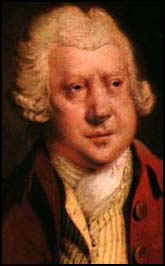 |
Arkwright
also met John Kay, a clockmaker from Warrington, who had been busy for
some time trying to produce a new spinning-machine with another man,
Thomas Highs of Leigh. Kay and Highs had run out of money and had been
forced to abandon the project.
Arkwright was impressed by Kay and offered to employ him to make this new
machine. Arkwright also recruited other local craftsman to help, and it
was not long before the team produced the Spinning-Frame. The machine was
able to produce a thread that was far stronger than that made by the Spinning-Jenny
produced by James Hargreaves.
In 1769 Arkwright went to Ichabod Wright, a banker from Nottingham, in
search of funds to expand his business. Wright introduced Arkwright to
Jedediah Strutt and Samuel Need. Strutt and Need were impressed with
Arkwright's water-frame and agreed to form a partnership.
Arkwright's Spinning-Frame was too large to be operated by hand and so the
men had to find another method of working the machine. After experimenting
with horses, it was decided to employ the power of the water-wheel. In
1771 the three men set up a large factory next to the River Derwent in
Cromford, Derbyshire. Arkwright's machine now became known as the Water-Frame.
|
Page
UP
| Edmund
Cartwright |
 |
Edmund
Cartwright, the son of a large landowner from Marnham, Nottingham, was
born in 1743. His brother, John Cartwright, was later to become one of the
leaders of the parliamentary reform movement. After being educated at
University College, Oxford, Cartwright became rector of the church at
Goadby Marwood in Leicestershire.
In 1784
Cartwright visited a factory owned by Richard Arkwright. Inspired by what
he saw, he began working on a machine that would improve the speed and
quality of weaving. Employing a blacksmith and a carpenter to help him,
Cartwright managed to produce what he called a power
loom. He took out a patent for his machine in 1785, but at this
stage it performed poorly. |
In
1787 Cartwright opened a weaving mill in Doncaster and two years later
began using steam engines produced by James Watt and Matthew Boulton, to
drive his looms. All operations that had been previously been done by the
weaver's hands and feet, could now be performed mechanically. The main
task of the weavers employed by Cartwright was repairing broken threads on
the machine. Although these power looms were now performing well,
Cartwright was a poor businessman and he eventually went bankrupt.
In 1799 a Manchester company purchased 400 of Cartwright's power looms but
soon afterwards their factory was burnt to the ground, probably by workers
who feared they would lose their jobs. This incident influenced other
manufacturers from not buying Cartwright's machines.
By the early part of the 19th century a large number of factory owners
were using a modified version of Cartwright's power loom. When Cartwright
discovered what was happening he applied to the House of Commons for
compensation. Some MPs such as Robert Peel, who had been one of those who
had made a great deal of money from the modified power loom, supported his
claim and in 1809 Parliament voted him a lump sum of £10,000. Edmund
Cartwright then retired to a farm in Kent and died in 1823. |
Page
UP
| Henry
Cort |
|
Henry
Cort was born in Lancaster in 1740.
In 1765 he was employed as an agent for the Royal Navy in London, a
position that made him aware of the poor quality of British iron compared
to the iron that was imported from abroad.
Henry
began experimenting on and improving the manufacture of English iron.
In
1775 he gave up his job as agent for the Navy and set up his own business,
a forge and iron mill, in Portsmouth harbour. |
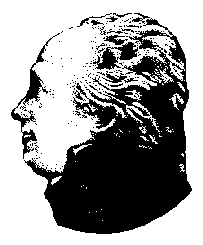 |
| Between
1783 and 1784, he took out patents for the processes he had
developed which improved the quality of bar iron. One patent process
involved the production of bar iron by hammering at a perfect welding heat
and rolling out all the impurities. This produced iron
that had been compressed into a tough and fibrous state.
The
second patent involved the manufacture of bar iron from ore or cast iron
in a reverberating or air furnace without a blast. During this process the
liquid iron was constantly stirred with iron bars burning off the carbon
from the cast iron and the iron was separated from the slag. This was then
hammered and rolled.
By
the end of the 19th century Britain was producing 4 million tons of iron
per year, which was more than the entire production of all the other
European countries.
Henry
was granted a government pension in 1794 to support his wife and family of
twelve children thent died in 1800.
In
1820 there were at least 8,200 of Cort's furnaces operating in Great
Britain and many of the actual iron manufactures considered that Cort's
greatest achievement would have to have been his rolling process.
|
Page
UP
| Abraham
Darby |
|
Abraham
Darby invented coke smelting in 1709 and advanced the mass production of
brass and iron goods. Coke smelting replaced charcoal with coal in metal
foundries during the process of refining metals; and this was important to
Britain's future since charcoal at that time was becoming scarce and was
more expensive.
Abraham Darby scientifically
studied brass production and was able to make advances in that industry
that turned Great Britain into an important brass goods exporter. |
| Darby
founded the world's first metallurgy laboratory at his Baptist Mills Brass
Works factory, where he refined brass making. He developed the process of
sand molding that allowed iron and brass goods to be mass produced at a
lower cost per unit. Before Abraham Darby, brass and iron goods had to be
individually cast. Darby received a patent for his sand casting in 1708.
Abraham combined the existing
technologies of casting iron with casting brass that produced goods of a
greater intricacy, thinness, smoothness, and detail. This proved
important to the steam engine
industry that came later, Darby's casting methods made the production of
the iron and brass steam engines possible. |
Page
UP
| John
Kay |
John Kay,
the twelfth child of a Yeoman farmer, was born near Bury in Lancashire in
about 1704. Little is known about his early life but he was living in Bury
in 1730 when he patented a machine for twisting and cording mohair and
worsted.
For centuries handloom weaving had been carried out on the basis of the
shuttle bearing the yarn being passed slowly and awkwardly from one hand
to the other. In 1733 Kay patented his flying
shuttle that dramatically increased the speed of this process. Kay
placed shuttle boxes at each side of the loom connected by a long board,
known as a shuttle race. By means of cords attached to a picking peg, a
single weaver, using one hand, could cause the shuttle to be knocked back
and forth across the loom from one shuttle box to the other.
A weaver using Kay's flying shuttle could produce much wider cloth at
faster speeds than before. Some woollen manufacturers used Kay's flying
shuttle but were reluctant to pay him royalties. The costs of
using the courts to obtain the money owed to him nearly ruined Kay.
In 1753 Kay's house in Bury was ransacked by a mob of textile workers who
feared that his machines would destroy their livelihood. Deeply depressed
about these events, John Kay left England for France where he is believed
to have died a pauper in about 1780. |
Page
UP
| James
Hargreaves |
James
Hargreaves was born near Blackburn in about 1720. Hargreaves received no
formal education and was unable to read or write. He worked as a carpenter
and weaver but had a strong interest in engineering.
By the 1760s Hargreaves was living in the village of Stanhill and was one
of the many weavers who owned his own spinning wheel and loom. It is
claimed that one day his daughter Jenny accidentally knocked over over the
family spinning wheel. The spindle continued to revolve and it gave
Hargreaves the idea that a whole line of spindles could be worked off one
wheel.
In 1764 Hargreaves built what became known as the Spinning
Jenny. The machine used eight spindles onto which the thread was
spun from a corresponding set of rovings. By turning a single wheel, the
operator could now spin eight threads at once. The thread that the machine
produced was coarse and lacked strength, making it suitable only for the
filling of weft, the threads woven across the warp.
Originally Hargreaves produced the machine for family use but when he
began to sell the machines, spinners from Lancashire, fearing the
possibility of cheaper competition, marched on his house and destroyed his
equipment. Hargreaves did not apply for a patent for his Spinning
Jenny until 1770 and therefore others copied his ideas without
paying him any money.
Hargreaves moved to Nottingham where he erected a small spinning-mill.
Others began to make improvements to the Spinning
Jenny and the number of threads was increased from eight to eighty.
By the time James Hargreaves died in 1778, over 20,000 Spinning Jenny
machines were being used in Britain.
|
Page
UP
| Samuel
Crompton |
Samuel
Crompton, the son of a small farmer, was born in Firwood, Bolton, in 1753.
Later he moved to Darwen, a small village 9 miles north of Bolton. After
working at various jobs he set out to invent a spinning machine that would
improve on the Spinning Jenny
that had been produced by James Hargreaves.
In 1775 Crompton produced his spinning
mule, so called because it was a hybrid that combined features of
two earlier inventions, the Spinning
Jenny and the Water Frame.
The mule produced a strong, fine and soft yarn which could be used in all
kinds of textiles, but was particularly suited to the production of
muslins.
Crompton was too poor to apply for a patent and so he sold the rights to a
Bolton manufacturer. The first mules were hand-operatedand could be used
at home. |
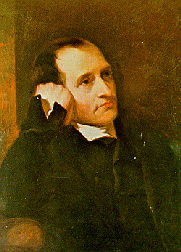 |
By
the 1790s larger versions were built with as many as 400 spindles. David
Dale was quick to see the potential of the mule and purchased several for
his factory in New Lanark, Scotland.
The Spinning Mule could also
be driven by the new steam engines that were being produced by James
Watt and Matthew Boulton. A large number of factory owners
purchased Crompton's mules, but because he had sold the rights for his
machine, he made no money from these sales.
Robert Peel was one of those who felt sorry for Crompton and in 1812
arranged for the House of Commons to grant him a reward of £5000.
Crompton used the money to invest in a cotton factory but the venture
ended in failure. Samuel Crompton died in poverty in Bolton in 1827. |
Page
UP
| Eli
Whitney |
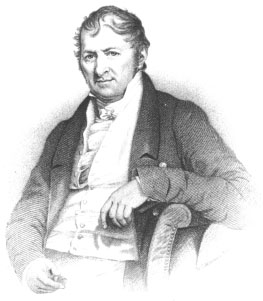 |
Eli
Whitney was born in Westboro, Mass., on Dec. 8, 1765.
He graduated from Yale College
in 1792 and by April 1793 had designed and constructed a machine called a cotton
gin that quickly and easily separated cottonseed from the
short-staple cotton fiber. Whitney's cotton gin was capable of maintaining
a daily output of 23 kg of cleaned cotton, and its effect was far-reaching,
making southern cotton a profitable crop for the first time. Whitney,
however, failed to profit from his invention. Numerous imitations appeared,
and his 1794 patent was not validated until 1807.
|
| Though
perhaps best known for his invention of the cotton
gin, Eli Whitney's greatest innovation pioneered the era of mass
production and modern manufacturing methods.
Eli Whitney died on Jan. 8,
1825. |
Page
UP
| |
|